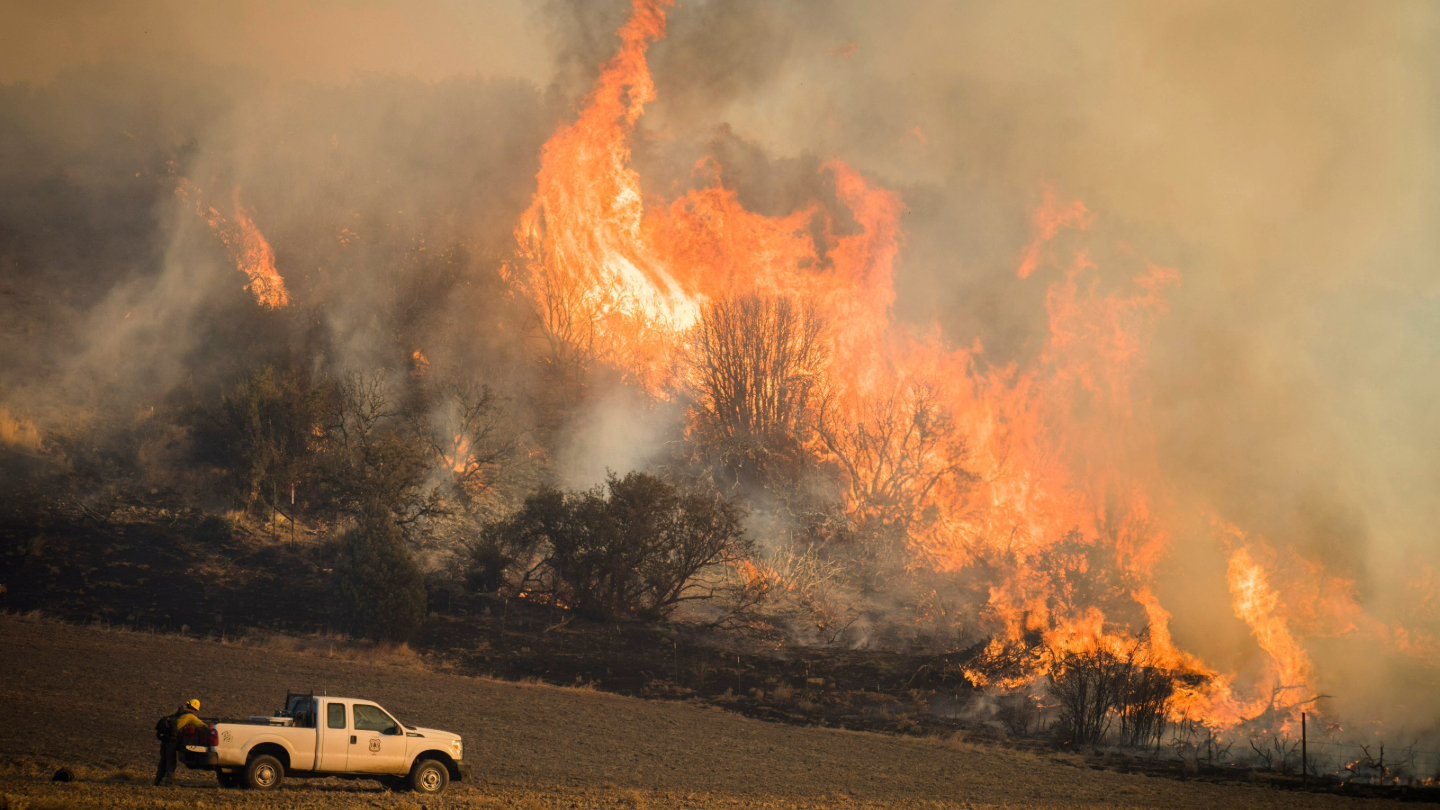4 min read

A new study using NASA satellite data reveals how drought affects the recovery of western ecosystems from fire, a result that could provide meaningful information for conservation efforts.
The West has been witnessing a trend of increasing number and intensity of wildland fires. Historically a natural part of the region's ecology, fires have been exacerbated by climate change-including more frequent and intense droughts-and past efforts to suppress fires, which can lead to the accumulation of combustible material like fallen branches and leaves. But quantifying how fire and drought jointly affect ecosystems has proven difficult.
In the new study, researchers analyzed over 1,500 fires from 2014 to 2020 across the West, and also gathered data on drought conditions dating back to 1984. They found that droughts make it harder for grasslands and shrublands, such as those in Nevada and Utah, to recover after fires-even the less severe blazes. Forests, if not burned too badly, rebound better than grasslands and shrublands because some forest roots can tap into water deeper in the ground. The team reported its findings in the February 2024 issue of Nature Ecology & Environment.
"Many of the West's grasslands experience low-severity fires," said Shahryar Ahmed, lead author of the study and a research scientist at NASA's Goddard Space Flight Center in Greenbelt, Maryland. "This study shows that even those blazes can trigger a slow recovery in these ecosystems if accompanied by a preceding drought."
If ecosystems don't have enough time to bounce back before another drought or fire, that could lead to permanent changes in the types of plants growing there. That, in turn, can increase the risk of soil erosion and landslides, and alter the usual patterns of water running off into streams and lakes.
"Once a fire is contained, that's when the remediation efforts happen," said Everett Hinkley, the national remote sensing program manager for the U.S. Forest Service, who wasn't involved in the new research. "Understanding how a particular ecosystem and land cover type is going to respond after the fire informs what actions you need to take to restore the landscape."
Without such restoration, changes in land cover can cascade to potentially affect agriculture, tourism, and other community livelihoods. To track the recovery of the different ecosystems, the researchers examined changes in evapotranspiration (ET)-the transfer of water to the atmosphere through evaporation from soil and open water and transpiration from plants-before and after the fires. Monitoring evapotranspiration helped the team identify whether different ecosystems, such as forests and grasslands, completely recovered after a fire, or if the recovery was delayed or disrupted.
That evapotranspiration data came from OpenET, a tool that calculates evapotranspiration at the scale of a quarter-acre across the western United States. It does so using models that harness publicly available data from the Landsat program, a partnership between NASA and the U.S. Geological Survey, along with other NASA and NOAA satellites.
"This study highlights the dominant control of drought on altering resilience of vegetation to fires in the West," said Erin Urquhart, the water resources program manager at NASA Headquarters in Washington. "With ongoing climate change, it is imperative that land managers, policymakers, and communities work together, informed by such research, to adapt to these changes, mitigating risks and ensuring the sustainable use of water and other natural resources."
The research also showed that forests, grasslands, and shrublands all struggle to recover from droughts that occur close in time with high-severity fires, which are becoming more common in the West. That can lead to potentially lasting changes not only in the plant communities but also in local and regional water dynamics.
Severe fires damage plants to such an extent that evapotranspiration is greatly reduced in the following years, the researchers found. So instead of evaporating into the atmosphere, more water sinks into the ground as recharge or becomes runoff.
Using a subset of nearly 800 fires from 2016 to 2018, the researchers calculated that across all the ecoregions in the study, an average of about 528 billion gallons (two cubic kilometers) of water was diverted as runoff or recharge during the first year after a fire. That's equivalent to North Dakota's annual water demand, or one quarter of Shasta Lake, California's largest humanmade lake.
When more water becomes runoff, it means less could be available for ecosystem recovery or agriculture. As Earth's climate continues to warm, understanding these shifts is crucial for developing strategies to manage water resources more effectively and ensure water security for future generations.
By: Emily DeMarco, NASA Earth Science Division






